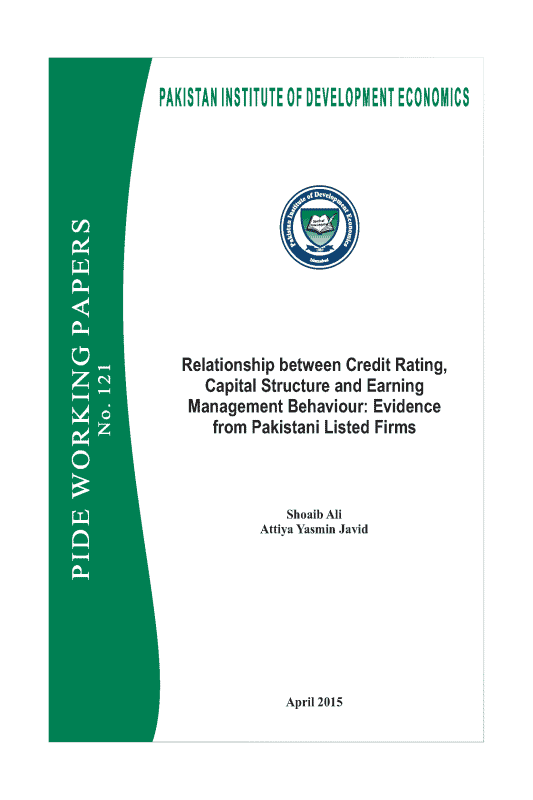
Pakistan Institute of Development Economics
- Home
Our Portals
MenuMenuMenuMenuMenuMenuMenu - ResearchMenuMenuMenuMenuMenuMenuMenu
- Discourse
- The PDR
- Our Researchers
- Academics
- Degree Verification
- Thesis Portal
- Our Portals
Relationship between Credit Rating, Capital Structure and Earning Management Behaviour: Evidence from Pakistani Listed Firms
Credit ratings have become a widely accepted measure of firms’ creditworthiness in financial markets. The present study aims to examine the impact of external credit ratings on the financial structure decision-making of Pakistani non-financial firms for the period 2007-2012 This study examines whether there are any systematic differences in firms’ levels of leverage across the rating levels which would suggest that the cost and benefits of credit ratings are material for such firms. The study finds that credit ratings are an important determinant of the capital structures of firms and that there is a non-linear inverted U-shaped relationship between credit ratings and capital structures. It is noted that rated firms have higher leverage than non-rated firms, but within the rated firms, leverage varies across the rating levels. High and low rated firms are found to have low leverage in their capital structures, and mid rated firms have higher leverage. Low gearing ratios may suggest that such firms have higher incentive to maintain their current ratings or to achieve upgrades, given the cost and benefits offered by credit ratings, than firms with high gearing ratios. While credit rating play a significant role in explaining why firm involve in managing their earning and it is found that rated firm manage their earning in a significantly different way as compared to the non-rated firms and it is also found that firm at the end of the rating spectrum manage their earning to the greater extent as compared to the mid rated firm. The implication of the study is that firms having higher and lower ratings have low level of leverage and mid rated firms have higher level of leverage. Previous year ratings provokes firms to indulge in earning smoothening activates and rating agencies needs to consider this factor while making their final valuation of the firm.



